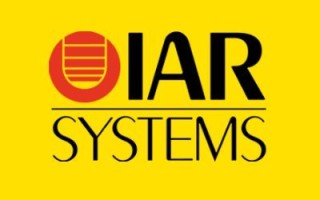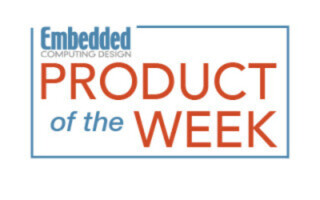An Interview with the New Sheriff at IAR Systems
February 17, 2022
Blog

There’s been a changing of the guard at IAR Systems, but not necessarily a change in direction—sort of.
You may have heard that IAR put a new CEO in place, recently removing the “interim” tag from Richard Lind’s title. He’s now on board for the long haul, and I was able to spend some time with him to see what changes (or lack thereof) he had in store for the embedded software company. The most straightforward way to present our discussion is to simply show you what questions I asked along with Richard’s responses.

Q: Why do you think that IAR has not been as successful as it could be in the recent past?
A: There are a couple of elements to it. First, the pandemic hurt us, because we are the kind of company that likes to be in front of the customer. And obviously that wasn’t possible. Secondly, we could have done a better job internalizing where the embedded industry was going.
Q: What do you plan to do differently with IAR over the next 12 to 18 months?
A: We’re planning now for the next 24 months, so let’s talk about that time frame. There are some meta trends that we need to incorporate. For example, the embedded industry would typically look at a system like “here’s the CPU, here’s the chip set, here’s the compiler, and so on.” Add in your functional safety and you’re done.
We need to move away from this point-based view and look at the system more holistically. For example, when I turn knob A, how does it affect sensor B? It’s a complete platform view. We need to move from selling specific functions to selling holistic platforms.
That goes hand in hand also with how we need to change the delivery model. We are exploring capabilities and possibilities. That could be a cloud-based delivery model, streaming, and providing background updates.
Q: What applications do you think have the biggest potential for IAR over the next 24 months?
A: RISC-V is already a focus, and we are executing quite well in that space. We’re seeing an uptick there. It’s not tremendous, but it’s still an uptick. We invested early in RISC-V and now it’s paying off.
We are integrating AI and machine learning. Being able to integrate that into our platform approach gives the developer the ability to run these models in the Cloud. Then you download that code and refine it before you embed it into your platform. This way, you’re embedding much smarter code.
Keep in mind that this is hard to do. If it was simple, others would already have been doing it. At the same time, it’s extremely valuable. We’ve formed some partnerships around this, where we take the partner’s C code, upload it and model it in the Cloud using AI techniques, then return the results and send them to the compiler. The result is nearly perfect code. It's an interesting new way of doing things.
We are also looking at using AI internally, building it into our Embedded Workbench tool to ease the flow for a developer. That’s a bit more complicated, because compilers are straightforward tools, working linearly. And AI is about connecting dots across multiple linear things.
Q: Which application space holds the most promise for IAR?
A: Automotive is clearly important. The number of cars produced annually varies wildly depending on who you ask, but if you multiply your number by the number of MCUs in modern cars, you end up with a huge market.
Healthcare is also important, but it’s more complex, partly because the lifetime of the equipment is longer. In addition, our security offerings for healthcare are essential going forward. Then there is industrial automation, which can also include white goods.
Q: What is IAR’s place in security, especially with the acquisition of Secure Thingz?
A: There’s no question that having security is extremely valuable. IAR does embedded development for MCUs for so many applications, and they all have to be secure. So we should be the one supplying that security. And through the combination of IAR and Secure Thingz, we can help you secure the code you develop with our tools and we can also help you secure the code you develop with other suppliers’ tools.
Q: One of the changes I see at IAR is that you are “end-of-lifing” many of the company’s products. Why are you taking that step?
A: This has a lot to do with the financials, which can get a little complicated. Basically, you need to look at your assets and determine whether or not they are still active and valid. If they are, you keep them on your balance sheet. If they're not, you write them down. That said, we took a hard look at all of our assets to determine which were viable and which weren’t.
Q: Were there any other changes at IAR?
A: One thing that most people won’t see if that we’ve expanded our leadership team from five people to ten, where we are including some of the more global representatives. Now, this larger group will interact and act more quickly. One thing that I learned from my days at Microsoft is that you really need to have your finger on the globally pulse of the industry.





